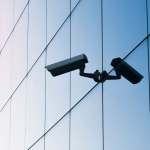There are a million ways to secure your dispensary operation adequately. There are just as many ways to over-engineer security, as well as to have security features/personnel that are not being used efficiently. I first want to differentiate between “installed security measures” and “static” or “ongoing” security measures. Installed security would be any piece of technology, equipment, or physical barrier that is always in the same place, functioning the same way, without human interaction. This includes cameras, motion sensors, doors, locks, controlled access points, counters, bollards, mosquitos, motion sensor lighting, and alarms. Static or ongoing security measures include items such as: security personnel, remote monitoring, arming and disarming alarms, I.D. badges/keys/key cards, and any other security SOPs/protocols for general employees that are working in the building.
Now, you will have a multitude of choices both in the systems and hardware, as well as how you implement them together in the same environment. I have seen over-engineered security that has cost operators a lot of extra money and resources, and I have seen under-engineered and inefficient security that causes shrinkage and logistical setbacks in the normal operation of business. We also need to champion the customer experience in these situations. Security measures should be noticed and present, but fade into the background as the customer shops.
The goal here is to have 100% compliant security (based on regulations). But, to also make sure that you go as far as is necessary to secure your facility so your employees (and customers) can safely operate every day, you may need to go further than regulations require to do so. When you have adequate installed security it is important to ensure that the employees know how to use the entire security system, as well as protocols for what to do in an emergency. It is important to always have a person who has the primary job of security while they are on the premises, otherwise it becomes a lot of employee’s “secondary responsibility” and it does not take the proper priority that it should. That security person should know exactly what they are to be doing for every minute they are on shift, as security is about vigilance. The vigilance that you show in your security will provide for a relaxed and comfortable shopping experience both for your customers and your employees.
The problems arise when you go to integrate the two. Training normal staff on the security system can be tedious, as well as determining “post orders” for security personnel. When integrating the systems, listen to your staff and their feedback on ease-of-use, security gaps, and the areas they think are “overdone”. They are the ones working with the system everyday, and will give you good feedback on its effectiveness. Your employees should be giving you feedback from their perspective. Once you are in operation, and have noticed anything that should be adjusted, make the appropriate changes to the post orders or SOP’s and implement them, retrain the staff if needed, and immediately notify your local authority of any big changes, just to keep them up to date. Too many times I have seen operations get off the ground successfully, and remain vigilant in their security for a while, and then complacency happens. Often one or more features of the security you paid for is not being utilized and you may have waste in your application of resources, as well as a gap in your security measures, which is a big deal.
Maintaining the relationship between installed security and the static security and staff you have in your facility can truly make or break your operation on a daily basis. Ensure that you are utilizing every resource available for your site’s security, and if a particular piece becomes superfluous, implement changes to utilize it, or get rid of it. Lean, efficient security systems tend to be in place the longest, with the most sustainability, brought on by the ease of use and consistent communication with the staff, leadership, and security personnel. Stay lean!
How Can Sapphire Risk Help?
Tony Gallo and the team at Sapphire Risk Advisory Group are prepared to help with ensuring installed security is compliant and cost-efficient. Follow us on social media to stay up to date with cannabis industry updates!
Author

If you are a current operator (or want to be) Tyler Stratford can help!
When Tyler got out of the Army as a 23 year-old, he witnessed cannabis save the life of his grandmother, who was unable to treat her back pain with opioids. He then began working for one of the first licensed vertically integrated cannabis companies in Boulder, Colorado, Boulder Kind Care. He helped them relocate and build their cultivation facility, including equipment selection and installation. For a few years he worked his way through almost every one of the positions across the cannabis vertical. He has held cultivation management positions, dispensary positions, and eventually was the director of compliance for Boulder Kind Care. After helping a couple other local vertically integrated companies transition from Medical to Dual/Medical & Recreational companies in the Colorado market, he then went to work for MJ Freeway as an Operational Implementation Specialist. Having been a beta user of MJ Freeway and the only one with perspective on “both sides” of the software, he was responsible for the implementation and “go live” of well over 400 operations in the cannabis industry, across the United States, Canada, Puerto Rico, and Spain, including the first 4 dispensaries in 4 states (NV, MN, AK, FL). He has spoken at countless conferences and events, trained thousands of operators on both cannabis plant/product knowledge, compliance, tools/software, and helped create a lot of their educational content and SOP documentation. After 3 years, he then went to work for Canna Advisors (one of the most prestigious, professional, and successful consulting companies in the industry) as their Director of Client operations, advising both pre-license and post-license clients on operational set-up and efficiencies. He also created their Strategic Partner Program, negotiating deals for their high-quality clients with vendors of ancillary cannabis products. He even represented a client as an expert witness in an appeals case where he spent over an hour taking questions from the State AG, and they got the license. Since then, he has helped multiple start-ups as Director of Operations and Chief Strategy Officer, primarily in the California Market.
- First Experiences: What Our Interns Learned From Entering The Cannabis Industry

- California Senate Bill 69 Adds CEQA Requirements for New Cultivators

- Top 5 Cannabis Security and Surveillance Violations

- Peace of Mind in the Retail Sector: Facility Security

- Opportunities in the Ohio (O-High-O) Cannabis Market

- Building Security and Trust: Verifying Identification and Payments

- The Importance of Loss Prevention

- Thoughts to Improve Cannabis Security Regulations Across the Nation

- Opportunities in the Minnesota Cannabis Market

- U.S. Cannabis Legalization 2023 Update


